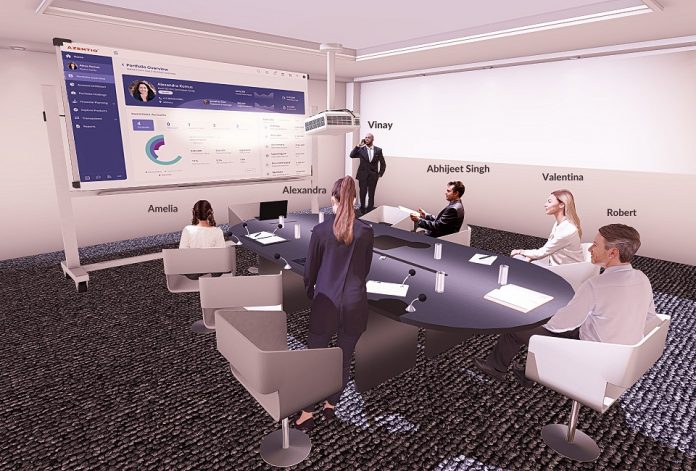“Once the prospects and the clients are engaged in the virtual world, there is no lack of opportunity for wealth management to thrive. Educating them about the firm’s capabilities, tax planning, legal aspects, estate planning, succession planning, networking, business advice, and access to esoteric investments, among other use cases are as broad as the capabilities of the wealth management firm”
The Metaverse is such a massive buzzword generating a lot of excitement! It refers to immersive virtual worlds created by a network of 3D internet-based communities that people can interact with and participate in. It can be accessed by various devices where users can work, socialise and play.
Previously more conceptual than anything, the Metaverse finds itself on the receiving end of a lot of interest following Facebook’s decision to rebrand itself as Meta. “3D spaces in the Metaverse will let you socialize, learn, collaborate and play in ways that go beyond what we can imagine,” Facebook explains on its website. People will use the Metaverse to communicate, shop, and share information. Just like in a video game, users are represented by an avatar with the aim of a more connected, immersive, and accessible experience than in the physical environment.
One of the most successful use cases of the Metaverse is the virtual reality platform called Second Life. It was launched in 2003 by Linden Lab. It has over 70 million registrants, and an average of 200,000 daily active users. The most ground-breaking aspect of Second Life is that the residents can do almost anything people do in real life, such as watching movies, listening to music, playing games, going to parties, buying or selling stuff, conducting business meetings, product launches, and creating new content for the world, be it items or even buildings. The monetary exchange activity that you can take part in is not limited to buying and selling items. You can also buy or sell real estate. Regular Second Life residents usually acquire plots of land and houses to reside in. Second Life has claimed a current GDP of about $650 million, making it one of the largest virtual economies in the world.
The concept is gaining traction in many industries and use cases that would provide an economic raison d’être are emerging. McKinsey cites a potential generation of up to $5 trillion in impact by 2030. “It is shaping up to be the biggest new growth opportunity for several industries in the coming decade, given its potential to enable new business models, products, and services, and act as an engagement channel for both business-to-consumer and business-to-business purposes.”
The McKinsey report cites the top five use cases for enterprise companies as; marketing campaigns or initiatives, learning and development for employees, meetings in the Metaverse, events or conferences, and product design or digital twinning. Banks, too, are getting in on the action by offering investment opportunities in the Metaverse.
But how can the Metaverse be successfully applied to banking? How can the Metaverse have a useful application beyond gaming via VR headsets and AR glasses?
Indeed, Covid-19 forced change, and banks and wealth managers have now largely moved to a hybrid model, where clients and advisers interact and communicate face to face and over digital channels; remote meetings, client portals, and exchanging messages via WhatsApp are all now commonplace.
Taking that one step further, there is a ripe opportunity to engage clients virtually.
Banks can identify potential customers, onboard them via crypto wallets. Once that is done, they can offer payments, lending, and custody services.
And to the wealth manager, once prospects and clients are engaged in the virtual world, there is no lack of opportunity, such as educating them about the firm’s capabilities, tax planning, legal aspects, estate planning, succession planning, networking, business advice, and access to esoteric investments – the use cases are as broad as the capabilities of the wealth management firm.
JPMorgan, for one, has already experimented with a virtual lounge, and UBS has been looking at VR for training. Wealth managers could also host first-round interviews in automated digital formats.
In terms of investment, banks can consider developing their own virtual world platforms (a private Metaverse), enabling new products and even marketplaces and tying them back to traditional infrastructure.
However, this is not without challenges. Getting clients to engage with the Metaverse is a notable one. This is expected to be less of an issue with next-gen investors who are already much more on board with everything virtual.
The fact that an avatar used within a VR environment can change from event to event could also pose an issue in an industry, where KYC and client identification are paramount. NFT-based identities with standards like ERC 725 could help improve risk management, compliance management, data protection, and fraud management.
Metaverse technology is not cheap either. Seamless virtual experiences need high-quality hardware like headsets, clothing, or cameras that can capture movement. They also need complex processing capabilities and enough power to support a virtual environment. In addition, banks will need to be able to take in, store and analyse all the data from interactions in the Metaverse. Take up will also rely on a high-speed internet connection – something that is not yet ubiquitous.
The current reality is that although the Metaverse is both possible and doable, adoption is not yet on the horizon for most. In a world where the banking industry is just coming to terms with the changes resulting from Covid-19, it will take time for further change to filter through. But a combination of user acceptance of the Metaverse offering something tangible, and beneficial will most likely dovetail with banks needing to meet the needs of a new generation of investors that are keen to engage not just digitally, but in a virtual world too. Therefore, banks need to sit up and take notice and put into place a Metaverse strategy as well as an investment classification.
Investing in The Metaverse
The Metaverse offers ample investment opportunities for investors. 2021 saw virtual real estate sales exceeded $500 million. One example of this is a decentralised 3D virtual reality platform, Decentraland. It is made up of 90,601 parcels of land in the form of NFTs. They can be bought with the cryptocurrency MANA, which is based on the Ethereum blockchain. Snoop Dog owns some real estate there.
There was the recent sale of a mega (virtual) yacht called Metaflower in the Sandbox Metaverse, for a staggering US$650,000. The four-storeyed yacht comes with two helipads (with two virtual helicopters sold separately), several lounges, a dance floor, and a jacuzzi.
Back in the world of conventional investment, there are opportunities too. Investors looking for opportunities are already targeting companies involved in virtual reality (VR) and augmented reality (AR). Beyond that, interesting sectors include gaming, consumer technology and communications, plus cybersecurity and digital infrastructure.
Banks are already responding to Metaverse-related opportunities. HSBC and JPMorgan both own land in blockchain-based Decentraland. HSBC has also launched a fund to capture investment opportunities in the Metaverse for its HNW and UHNW clients in Hong Kong and Singapore. The Metaverse Discretionary Strategy portfolio, managed by its asset management arm, focuses on investing within the Metaverse ecosystem across five segments; infrastructure, computing, virtualisation, experience and discovery, and interface.
And the CI Galaxy Metaverse ETF is replicating the performance of the Alerian Galaxy Immersive Digital Worlds. It is hedged to CAD dollars and tracks the performance of companies that are materially engaged in the interactions, enablement and connectivity to the Metaverse.
Similarly, Invesco, a global asset manager with $1.6 trillion of assets under management, has launched an investment fund focused on the Metaverse. The fund will focus on seven areas including operating and computer systems, hardware and devices that provide access to the Metaverse, immersive platforms developed with artificial intelligence, blockchain, services and assets designed to facilitate the digitisation of the real economy.











